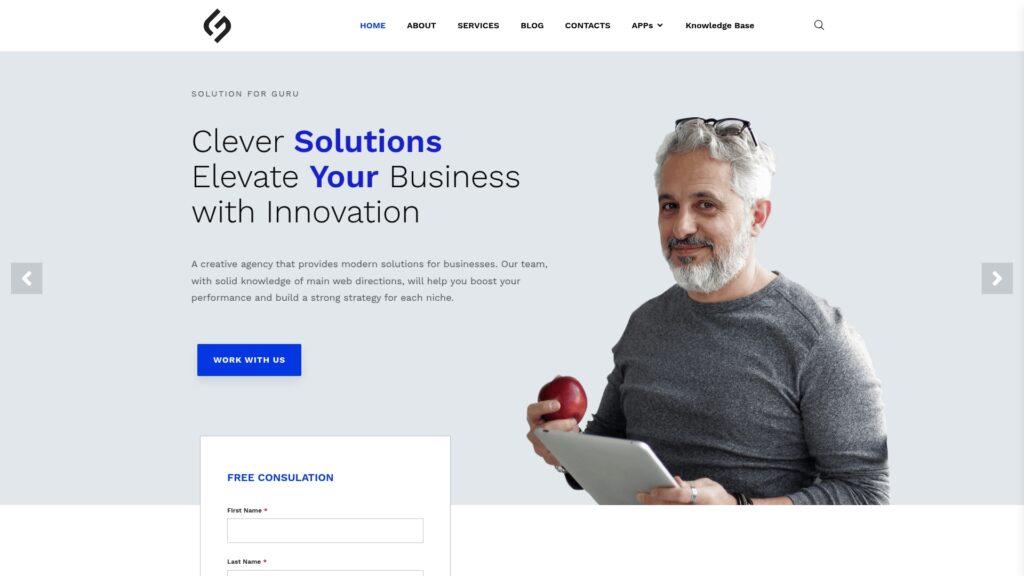How Does ITIL Framework Transform IT Service Management Practices?

In today’s technology-driven business landscape, organizations depend heavily on IT services to maintain operations, serve customers, and drive innovation. Consequently, the need for structured, reliable, and efficient IT service delivery has never been more critical. ITIL (Information Technology Infrastructure Library) has emerged as the world’s most widely adopted framework for IT Service Management (ITSM), providing comprehensive guidance that helps organizations deliver consistent, high-quality IT services aligned with business objectives. This article explores the relationship between ITIL and ITSM, examines how organizations can leverage ITIL principles to transform their IT operations, and demonstrates how modern ITSM platforms support ITIL implementation for sustainable service excellence.
Table of Contents
- Quick Summary
- What Is ITIL and How Does It Relate to ITSM?
- What Are the Core Components of the ITIL Framework?
- How Does ITIL Service Strategy Guide IT Organizations?
- What Does ITIL Service Design Encompass?
- What Role Do ITSM Platforms Play in ITIL Implementation?
- How Can Organizations Successfully Implement ITIL?
- Summing up
- Frequently Asked Questions
- Why Partner with Solution4Guru for ITIL Implementation Success?
Quick Summary
ITIL (Information Technology Infrastructure Library) provides the world’s most comprehensive framework for IT Service Management, offering proven best practices for delivering IT services that create business value. This guide explores:
- ITIL fundamentals: Understanding what ITIL is and how it structures ITSM practices
- Service lifecycle: The five stages from strategy through continual improvement
- Core processes: Key ITIL processes including incident, problem, change, and service level management
- Platform support: How Freshservice, ManageEngine, and Zendesk enable ITIL implementation
- Implementation strategies: Practical approaches to adopting ITIL within your organization
- Business benefits: How ITIL drives improved service quality, efficiency, and alignment
- Modern adaptations: How ITIL integrates with Agile, DevOps, and digital transformation
Whether you’re beginning your ITIL journey or seeking to optimize existing implementations, this comprehensive guide provides actionable insights for leveraging ITIL to achieve IT service management excellence.
What Is ITIL and How Does It Relate to ITSM?
ITIL (Information Technology Infrastructure Library) represents a comprehensive framework of best practice guidance for IT Service Management (ITSM). Developed originally by the UK government in the 1980s and now managed by AXELOS, ITIL has evolved through multiple versions, with ITIL 4 being the current iteration released in 2019. The framework provides detailed guidance on how IT services should be designed, delivered, supported, and continuously improved to maximize business value.
Understanding the ITIL-ITSM Relationship
IT Service Management (ITSM) refers to the holistic approach organizations take to designing, delivering, managing, and improving IT services. ITSM encompasses all activities, policies, processes, and resources required to provide IT services to customers effectively. Essentially, ITSM represents “what” organizations do to manage IT services, while ITIL provides guidance on “how” to do it effectively based on proven practices developed over decades.
Think of ITSM as the discipline and ITIL as one comprehensive methodology for practicing that discipline. Organizations can practice ITSM without following ITIL, but ITIL provides structured, proven approaches that significantly increase the likelihood of ITSM success. Moreover, ITIL’s widespread adoption means that ITIL-based approaches are well-understood across the industry, facilitating communication, benchmarking, and talent acquisition.
The Evolution of ITIL
ITIL has progressed through several major versions, each reflecting evolving IT practices and business needs:
ITIL-v1 (1989-2000): The original version comprised approximately 40 books covering various IT service management aspects. While comprehensive, its breadth made implementation challenging and inconsistent.
ITIL-v2 (2000-2007): This consolidated version reduced content to 8 core books organized around service delivery and service support processes. ITIL v2 gained significant global adoption and established ITIL as the de facto ITSM standard.
ITIL-v3 (2007-2019): A major revision organized around five lifecycle stages—Service Strategy, Service Design, Service Transition, Service Operation, and Continual Service Improvement. This lifecycle approach emphasized that services require ongoing management throughout their entire existence, not just during design and deployment phases. ITIL v3 became the most widely adopted version globally.
ITIL 4 (2019-present): The current version updates ITIL for the digital age, incorporating Agile, DevOps, and Lean principles while maintaining proven ITIL practices. In addition, ITIL 4 introduces the Service Value System and Service Value Chain concepts, emphasizing value co-creation with customers and stakeholders. Furthermore, ITIL 4 aligns with broader technology and business transformation trends including cloud computing, automation, and digital services.
Core ITIL Principles
ITIL 4 articulates seven guiding principles that inform all ITIL practices:
- Focus on Value: Everything should link to value creation for stakeholders
- Start Where You Are: Assess current capabilities rather than starting from scratch
- Progress Iteratively with Feedback: Avoid attempting massive transformations; improve incrementally
- Collaborate and Promote Visibility: Work across boundaries with transparency
- Think and Work Holistically: Consider the entire service system, not isolated components
- Keep It Simple and Practical: Eliminate waste and produce practical outcomes
- Optimize and Automate: Maximize human value by automating routine work
These principles guide ITIL implementation and adaptation to specific organizational contexts rather than prescribing rigid approaches that must be followed exactly.
ITIL’s Business Value Proposition
Organizations implement ITIL to achieve multiple strategic benefits:
Improved Service Quality: ITIL practices lead to more reliable services with fewer incidents and faster issue resolution. Consequently, end users experience less disruption and greater productivity.
Cost Efficiency: By eliminating waste, optimizing processes, and improving first-time resolution rates, ITIL implementations typically reduce IT operational costs by 15-30% within 18-24 months.
Better Alignment: ITIL emphasizes connecting IT services to business objectives through practices like Service Level Management and Business Relationship Management. Therefore, IT investments demonstrably support business priorities rather than existing as separate technical initiatives.
Risk Management: Structured change management, comprehensive configuration management, and proactive problem management reduce risks of service disruptions, security incidents, and compliance failures.
Consistency and Predictability: Standardized processes ensure services are delivered consistently regardless of which team members are involved. Moreover, predictable services enable better business planning and decision-making.
Scalability: As organizations grow, ITIL-based practices scale more effectively than ad hoc approaches, maintaining service quality during expansion.
What Are the Core Components of the ITIL Framework?

ITIL 4 structures its guidance around the Service Value System (SVS), which describes how organizational components and activities work together to enable value creation through IT services. The SVS comprises several key elements working in concert.
The Service Value System
The ITIL Service Value System provides a holistic view of how various organizational elements cooperate to create value:
Guiding Principles: The seven principles mentioned earlier inform decision-making and behavior throughout the organization.
Governance: Organizational governance directs and controls activities, ensuring they align with organizational direction and meet stakeholder needs. Governance establishes authority, accountability, and decision rights that enable effective service management.
Service Value Chain: A central operating model comprising six activities—Plan, Improve, Engage, Design & Transition, Obtain/Build, and Deliver & Support—that organizations combine flexibly to create value chains appropriate for specific services and situations.
Practices: ITIL 4 describes 34 management practices organized into three categories: General Management Practices (14), Service Management Practices (17), and Technical Management Practices (3). These practices provide detailed guidance on specific aspects of service management.
Continual Improvement: An ongoing organizational focus on incremental and transformational improvement integrated throughout all activities rather than treated as a separate lifecycle stage.
ITIL Service Value Chain Activities
The Service Value Chain represents a flexible operating model adaptable to various organizational contexts and service types:
| Activity | Purpose | Key Inputs | Key Outputs |
|---|---|---|---|
| Plan | Ensure shared understanding of vision, direction, and improvement priorities | Organizational strategy, portfolio decisions, policies | Strategic plans, portfolio decisions, improvement initiatives |
| Improve | Drive continual improvement across all value chain activities | Performance information, improvement opportunities, feedback | Improvement initiatives, value chain performance improvements |
| Engage | Understand stakeholder needs and maintain transparent relationships | Service requests, stakeholder requirements, feedback | Stakeholder requirements, demand, engagement |
| Design & Transition | Ensure services meet stakeholder expectations for quality and value | Service requirements, improvement initiatives | Service components, validated changes, knowledge |
| Obtain/Build | Ensure service components are available when needed | Service component specifications, contracts | Service components, service performance information |
| Deliver & Support | Ensure services are delivered according to specifications | Service requests, incidents, service components | Service performance information, resolved incidents/requests |
Organizations configure these activities into value streams—specific combinations addressing particular scenarios. For instance, the value stream for responding to a service request differs from the value stream for implementing a major change. This flexibility enables ITIL to accommodate diverse organizational contexts rather than prescribing one-size-fits-all processes.
ITIL 4 Management Practices
ITIL 4 describes 34 management practices providing detailed guidance on specific management areas. Key service management practices include:
Incident Management: Minimize service disruption by restoring normal operations as quickly as possible. Incidents represent unplanned interruptions or quality reductions requiring rapid resolution to limit business impact.
Problem Management: Identify and manage root causes of incidents, preventing recurrence. While incident management focuses on restoring service quickly, problem management addresses underlying causes systematically.
Change Control: Ensure changes are assessed, authorized, and implemented in controlled ways that balance business needs with risk management. Effective change control enables organizational agility while preventing unauthorized or poorly planned changes.
Service Level Management: Define, document, agree upon, monitor, and report service levels, ensuring services meet documented targets and stakeholder expectations evolve appropriately.
Knowledge Management: Maintain and improve organizational knowledge, ensuring the right information reaches the right people at the right time for effective decision-making and issue resolution.
Service Desk: Provide single point of contact between service provider and users for all operational requirements including service requests, incident reports, and general inquiries.
Modern ITSM platforms like Freshservice, ManageEngine, and Zendesk provide comprehensive support for implementing these core ITIL practices, offering pre-configured workflows, automation capabilities, and reporting that align with ITIL guidance.
How Does ITIL Service Strategy Guide IT Organizations?
Service Strategy represents the first stage in the traditional ITIL lifecycle (from ITIL v3, still relevant within ITIL 4’s Service Value System), establishing the foundation for all other service management activities. Strategy defines what services should be offered, to whom, and how they create value for the business.
Understanding Service Strategy Components
Service Portfolio Management: This practice maintains the comprehensive set of services managed by an organization throughout their lifecycles. The service portfolio includes three categories: services in operation (Service Catalogue), services being developed or transitioned (Service Pipeline), and retired services. Effective portfolio management ensures investment decisions align with strategic objectives and organizational capacity.
Financial Management for IT Services: Understanding IT costs, budgeting, accounting for service delivery, and charging consumers appropriately (when applicable) enables informed investment decisions. Financial management answers critical questions: What do our services cost? Are we pricing appropriately? Where should we invest? How do IT costs compare to alternatives?
Business Relationship Management: This practice establishes and maintains strong relationships between service providers and business stakeholders. Business Relationship Managers understand business needs, ensure services align with evolving requirements, identify improvement opportunities, and handle complaints or dissatisfaction constructively. Moreover, this practice ensures IT understands business context rather than operating in technical isolation.
Service Strategy and Design: Organizations must determine which services to offer based on market analysis (for external service providers) or business needs analysis (for internal IT). Strategy development considers organizational capabilities, competitive positioning, risks, and required investments. Furthermore, strategy addresses make-versus-buy decisions—which capabilities should be developed internally versus acquired from third parties.
Aligning IT with Business Objectives
Effective service strategy requires deep understanding of business objectives, competitive dynamics, and how IT services contribute to business success. This alignment happens through:
Strategic Assessments: Regular analysis of business direction, technology trends, competitive threats, and organizational capabilities ensures IT strategy remains relevant as business context evolves.
Service Definition: Clear articulation of service value propositions—what benefits services provide, who they serve, and how they differ from alternatives. Well-defined services enable appropriate investment decisions and clear communication with stakeholders.
Demand Management: Understanding patterns in service demand enables capacity planning, investment prioritization, and sometimes demand shaping through pricing or policies that encourage efficient utilization.
Platforms like ManageEngine provide portfolio management capabilities that support strategic decision-making by providing visibility into the complete service landscape, associated costs, and performance metrics. This comprehensive view enables executives to make informed decisions about service investments, retirements, and improvements.
What Does ITIL Service Design Encompass?
Service Design transforms strategic objectives into comprehensive plans for creating or modifying services. Design considers all aspects of proposed services including functional requirements, management and operational requirements, and how services integrate with existing IT environments and business processes.
The Five Aspects of Service Design
ITIL identifies five critical aspects that must be designed comprehensively:
Service Solutions: The actual services being created or modified, including all functional and non-functional requirements. Design considers user interfaces, performance characteristics, availability requirements, security controls, and integration points.
Management Information Systems and Tools: The ITSM tools and supporting systems required to manage services throughout their lifecycles. Organizations must ensure appropriate tools are available for incident management, problem management, change control, monitoring, and other service management activities. Platforms like Freshservice provide comprehensive tooling supporting multiple ITIL processes within integrated environments.
Technology Architecture: The technical infrastructure and architecture required to deliver services including servers, networks, databases, applications, and cloud services. Architecture design balances functional requirements, performance needs, cost constraints, and operational considerations.
Processes: The processes required to support, maintain, and operate services throughout their lifecycles. Process design specifies activities, roles, inputs, outputs, metrics, and how processes integrate with other service management processes.
Measurement Systems and Metrics: The methods and metrics for assessing service performance, identifying issues, and demonstrating value. Measurement design defines what will be measured, how data will be collected, how metrics will be reported, and how information will drive improvement.
Critical Service Design Processes
Several specific practices prove particularly critical during service design:
Service Catalogue Management: Maintains accurate, current information about all operational services including service descriptions, dependencies, support arrangements, and entitlements. The service catalogue serves as the single source of truth about available services, enabling informed service requests and clear communication with users. Zendesk provides robust service catalogue capabilities with user-friendly interfaces that make finding and requesting services intuitive for end users.
Service Level Management: Defines, negotiates, documents, and manages service levels ensuring they reflect business needs while remaining achievable given organizational capabilities. Service Level Agreements (SLAs) formalize mutual commitments between service providers and customers. Effective SLA design balances ambitious targets that drive improvement with realistic assessments of current capabilities. Moreover, SLAs should emphasize business outcomes rather than purely technical metrics.
Capacity Management: Ensures IT infrastructure, applications, and services provide adequate capacity to meet current and future business demands cost-effectively. Capacity management includes business capacity management (understanding business demand), service capacity management (monitoring service performance and capacity), and component capacity management (managing individual technology components). Furthermore, capacity management informs investment decisions by forecasting when capacity expansions are required.
Availability Management: Designs services to meet agreed availability requirements through appropriate redundancy, resilience, monitoring, and maintenance approaches. Availability management considers planned downtime windows, maintenance requirements, recovery time objectives, and recovery point objectives. Additionally, availability management designs solutions balancing availability requirements with cost constraints—higher availability typically requires greater investment.
IT Service Continuity Management: Prepares for major disruptions through business continuity planning, disaster recovery capabilities, and crisis management procedures. Service continuity management identifies critical services, defines recovery priorities, implements appropriate resilience measures, and validates recovery capabilities through testing.
Design Coordination
Design coordination ensures all design aspects work together cohesively rather than creating disconnected designs for individual components. This practice coordinates design activities, manages design documents, and ensures designs meet requirements comprehensively. Moreover, design coordination facilitates reuse of proven design patterns and components across multiple services.
What Role Do ITSM Platforms Play in ITIL Implementation?
Modern ITSM platforms provide essential technological foundations that enable effective ITIL implementation, automating processes, enforcing workflows, capturing data, and providing visibility that would be impractical manually.
Freshservice: Modern ITIL for Agile Organizations

Freshservice brings a contemporary, user-centric approach to ITIL implementation that emphasizes simplicity, rapid deployment, and excellent user experiences. The platform supports core ITIL practices while avoiding complexity that sometimes makes traditional ITSM tools difficult to adopt and use.
Incident and Request Management: Freshservice provides intuitive ticket management with multi-channel support (email, portal, chat, phone), intelligent routing based on skills and availability, SLA management with escalations, and collaboration features that keep all stakeholders informed. The platform’s AI-powered assistant, Freddy, suggests solutions based on historical patterns and can resolve routine incidents automatically, embodying ITIL’s emphasis on efficiency and self-service.
Change Management: Structured change workflows with risk assessment, approval routing based on change type and risk level, implementation scheduling, and post-implementation review. Freshservice distinguishes between standard, normal, and emergency changes as ITIL recommends, applying appropriate governance to each while maintaining organizational agility.
Problem Management: Comprehensive problem tracking linking related incidents, facilitating root cause analysis, managing known errors, and tracking problem resolution through to permanent fix implementation. Trend analysis capabilities help identify recurring patterns suggesting underlying problems requiring investigation.
Service Catalogue and Self-Service: User-friendly service catalogues with clear service descriptions, request forms, and approval workflows. Self-service portals empower users to find answers, submit requests, and track status independently, reducing service desk workload while improving user satisfaction—key ITIL service operation objectives.
Knowledge Management: Searchable knowledge bases with article recommendations, usage tracking, and feedback mechanisms. Knowledge management proves critical across multiple ITIL processes including incident resolution, problem management, and service transition.
CMDB: Configuration management capabilities that maintain relationships between CIs, support impact analysis, and facilitate change planning. While not as extensive as some enterprise CMDB solutions, Freshservice provides sufficient configuration management for many organizations’ needs.
ManageEngine: Comprehensive Enterprise ITIL

ManageEngine Service Desk Plus provides comprehensive ITIL implementation capabilities suitable for large, complex IT environments requiring extensive customization, integration, and governance.
Complete Process Coverage: ManageEngine supports virtually all ITIL processes including incident, problem, change, release, service level, availability, capacity, IT service continuity, knowledge, asset, and configuration management. This comprehensive coverage enables organizations to implement ITIL holistically rather than piecemeal.
Advanced CMDB: Sophisticated configuration management with automated discovery, dependency mapping, impact analysis, and configuration audit capabilities. The CMDB integrates tightly with other processes—change management uses it for impact assessment, incident management leverages it for diagnosis, and problem management uses it to understand system relationships.
Asset Management Integration: Combined IT asset and service management providing complete lifecycle management from procurement through retirement. Asset management integration ensures accurate inventory, optimizes licensing, and supports financial management.
Project Management: Built-in project management capabilities enable IT teams to manage implementation projects, infrastructure upgrades, and other initiatives alongside service management activities within a single platform.
Customization and Flexibility: Extensive customization options including workflow designer, custom fields, business rules, and reporting that enable organizations to configure ManageEngine to match their specific ITIL implementations rather than forcing processes to match tool constraints.
Multi-Site and Multi-Tenant: Support for distributed organizations and managed service providers operating across multiple locations or serving multiple customers from shared platforms.
Zendesk: Customer-Centric ITSM with ITIL Alignment

Zendesk brings customer service excellence to ITIL implementation, making it particularly valuable for organizations prioritizing user experience alongside process maturity.
Omnichannel Support: Comprehensive multi-channel capabilities enabling users to engage via email, chat, phone, social media, or self-service portals with all interactions unified within single incident records. This approach aligns with ITIL’s emphasis on providing multiple service access channels while maintaining complete incident histories.
Exceptional Self-Service: Industry-leading knowledge bases, community forums, and Answer Bot (AI-powered virtual agent) that deflect significant incident and request volumes while improving user satisfaction. Self-service aligns perfectly with ITIL service operation goals of providing excellent service efficiently.
Incident Management: Sophisticated ticketing with intelligent routing, SLA management across multiple service level targets, escalation workflows, and collaboration tools. Zendesk’s ticket management balances structure with flexibility, ensuring process discipline without feeling rigid or bureaucratic.
Change and Problem Management: While not as comprehensive as some enterprise ITSM platforms, Zendesk provides change tracking and problem management adequate for many organizations, particularly those not requiring the most sophisticated capabilities.
Analytics and Reporting: Comprehensive analytics providing visibility into performance trends, agent productivity, customer satisfaction, and other key metrics. Reporting supports ITIL’s emphasis on measurement and continual improvement.
Integration Ecosystem: Extensive marketplace with hundreds of integrations connecting Zendesk with other business systems. Integration capabilities ensure ITSM processes connect with broader organizational workflows.
Comparative ITIL Capabilities
How Can Organizations Successfully Implement ITIL?

Successfully implementing ITIL requires more than purchasing tools and reading documentation – it demands careful planning, cultural change, executive sponsorship, and sustained commitment to process discipline and continual improvement.
Getting Started with ITIL
Assessment and Gap Analysis: Begin by assessing current ITSM maturity using frameworks like ITIL maturity models or capability assessments. Understand which ITIL processes already exist informally, where significant gaps exist, and what quick wins might build momentum. Honest assessment prevents overestimating current capabilities while identifying strengths to leverage.
Define Clear Objectives: Articulate specific business outcomes ITIL implementation should achieve—improved service availability, reduced incident resolution times, better change success rates, enhanced customer satisfaction, or cost reduction. Clear objectives enable prioritization, resource allocation, and success measurement. Moreover, business-focused objectives maintain stakeholder support more effectively than purely technical process improvement goals.
Prioritize Process Implementation: Attempting to implement all ITIL processes simultaneously overwhelms organizations and dilutes focus. Instead, prioritize based on pain points, quick wins, and logical dependencies. Many organizations begin with incident management and service request fulfillment—high-visibility processes that directly improve user experience—then expand to problem management, change control, and other processes progressively.
Select Appropriate Tools: Evaluate ITSM platforms considering ITIL process support, organizational size and complexity, budget constraints, integration requirements, and user experience. Platforms like Freshservice suit organizations prioritizing rapid deployment and modern user experiences. ManageEngine serves organizations needing comprehensive enterprise capabilities and extensive customization. Zendesk appeals to organizations emphasizing customer experience and omnichannel support. Consider conducting proof-of-concept implementations with shortlisted platforms using real scenarios before final decisions.
Implementation Best Practices
Executive Sponsorship: Secure visible executive sponsorship that communicates ITIL’s strategic importance, removes obstacles, allocates resources, and holds teams accountable. ITIL implementations lacking executive support face significantly higher failure rates as competing priorities and resistance undermine implementation efforts.
Process Ownership: Assign clear process owners for each ITIL process being implemented. Process owners design processes, ensure they’re followed, measure performance, and drive continual improvement. Without clear ownership, processes often become neglected or inconsistently applied.
Start Simple, Then Mature: Implement simplified process versions initially rather than attempting to achieve complete ITIL maturity immediately. Basic incident management that categorizes and tracks incidents provides more value than no process while avoiding complexity that sophisticated processes require. Subsequently, mature processes progressively as experience accumulates and benefits justify additional sophistication.
Training and Change Management: Invest substantially in training that addresses not just “how” processes work but “why” they matter. Help teams understand how ITIL processes benefit them personally, customers, and the organization. Address resistance directly through communication, involvement, and celebration of early wins. Moreover, recognize that cultural change takes time—patience and persistence prove essential.
Measure and Communicate: Establish baseline metrics before implementation, measure progress regularly, and communicate results broadly. Demonstrating tangible improvements builds momentum and justifies continued investment. Conversely, ignoring measurement allows skeptics to dismiss ITIL as bureaucratic overhead producing no value.
Adapt to Your Context: ITIL provides guidance, not rigid rules. Adapt ITIL recommendations to your organizational context, industry, culture, and specific needs. Successful ITIL implementations adopt the spirit and principles while customizing specifics appropriately rather than following guidance slavishly even when it doesn’t fit.
Summing up
ITIL provides the world’s most comprehensive and widely adopted framework for IT Service Management, offering proven guidance that helps organizations deliver reliable, efficient, and business-aligned IT services. The framework’s evolution through multiple versions reflects continuous adaptation to changing technology landscapes while maintaining core principles that transcend specific technologies or methodologies.
Successful ITIL implementation delivers substantial business value including improved service quality, reduced operational costs, better alignment between IT and business objectives, more effective risk management, and greater organizational agility. Moreover, ITIL’s widespread adoption creates common language and practices that facilitate communication, benchmarking, and talent mobility across organizations.
Regardless of platform choice, ITIL success depends fundamentally on organizational commitment to process discipline, cultural change, measurement-driven improvement, and sustained executive support. The most sophisticated tools cannot compensate for lack of process ownership, inadequate training, or organizational cultures that resist standardization and accountability. Conversely, organizations that embrace ITIL principles and invest appropriately in implementation create sustainable competitive advantages through superior IT service delivery.
The future of ITIL continues evolving as ITIL 4 integrates with Agile, DevOps, Lean, and digital transformation initiatives. This evolution ensures ITIL remains relevant in rapidly changing technology landscapes while maintaining the proven process discipline that has made it valuable for decades. Organizations beginning or advancing their ITIL journeys today position themselves for continued success in increasingly digital, service-oriented business environments.
Frequently Asked Questions
ITSM (IT Service Management) and ITIL (Information Technology Infrastructure Library) are closely related but distinct concepts that are often confused or used interchangeably. Understanding their relationship clarifies how they work together to improve IT service delivery. ITSM represents the broad discipline of managing IT services throughout their entire lifecycles. It encompasses all activities, policies, processes, and resources required to design, create, deliver, support, and improve IT services. ITSM is the “what”—the overall approach to managing IT as a service rather than simply managing technology. Organizations can practice ITSM using various methodologies, frameworks, or even ad hoc approaches they develop internally. ITIL is a specific framework providing detailed best practice guidance for practicing ITSM. It represents the “how”—a comprehensive collection of proven practices, processes, and procedures for implementing effective IT service management. ITIL provides structure, terminology, process descriptions, roles, metrics, and integration guidance that organizations can adopt to implement ITSM effectively.
ITIL applicability isn’t determined primarily by organization size but rather by the desire for structured, consistent, and efficient IT service delivery. While ITIL initially gained adoption in large enterprises, its principles and practices scale effectively to organizations of virtually any size when adapted appropriately. Small organizations benefit from ITIL through: Structured approaches to incident management ensuring issues are tracked, prioritized, and resolved consistently rather than handled ad hoc. Basic change control preventing unauthorized modifications that create problems. Simple service catalogues clarifying what IT provides and how to request services. Knowledge management preventing repeated problem-solving when solutions already exist. These fundamental practices create significant value regardless of organization size.
Why Partner with Solution4Guru for ITIL Implementation Success?
Implementing ITIL successfully requires specialized expertise that extends beyond understanding the framework – it demands practical experience adapting ITIL to diverse organizational contexts, managing complex organizational change, selecting and implementing appropriate tools, and sustaining improvements over time. Solution4Guru brings comprehensive ITIL consulting capabilities that dramatically accelerate your journey to service management excellence while avoiding costly mistakes that undermine many ITIL initiatives.

By partnering with Solution4Guru, your organization gains a committed advisor invested in your ITIL success. Their practical methodologies, proven implementation experience, and client-centric approach ensure you achieve measurable improvements in service quality, operational efficiency, and business alignment. Furthermore, Solution4Guru’s ongoing support means expert guidance remains available as your ITIL maturity advances—you’re never alone in your journey toward IT service management excellence.
Recommended:
- ITSM Change Management
- ITSM Integration: Streamlining IT Service Management for Modern Enterprises
- ITSM Problem Management
- What Are ITSM Ticketing Tools?
- ITSM Jobs: Your Guide to a Thriving Career in IT Service Management
- Why are ITSM Best Practices essential?
- What is an IT Management Service Provider?
- Comprehensive Guide to ITSM Tools: Features, Benefits, and Top Solutions
- What is IT Service Management (ITSM)?




